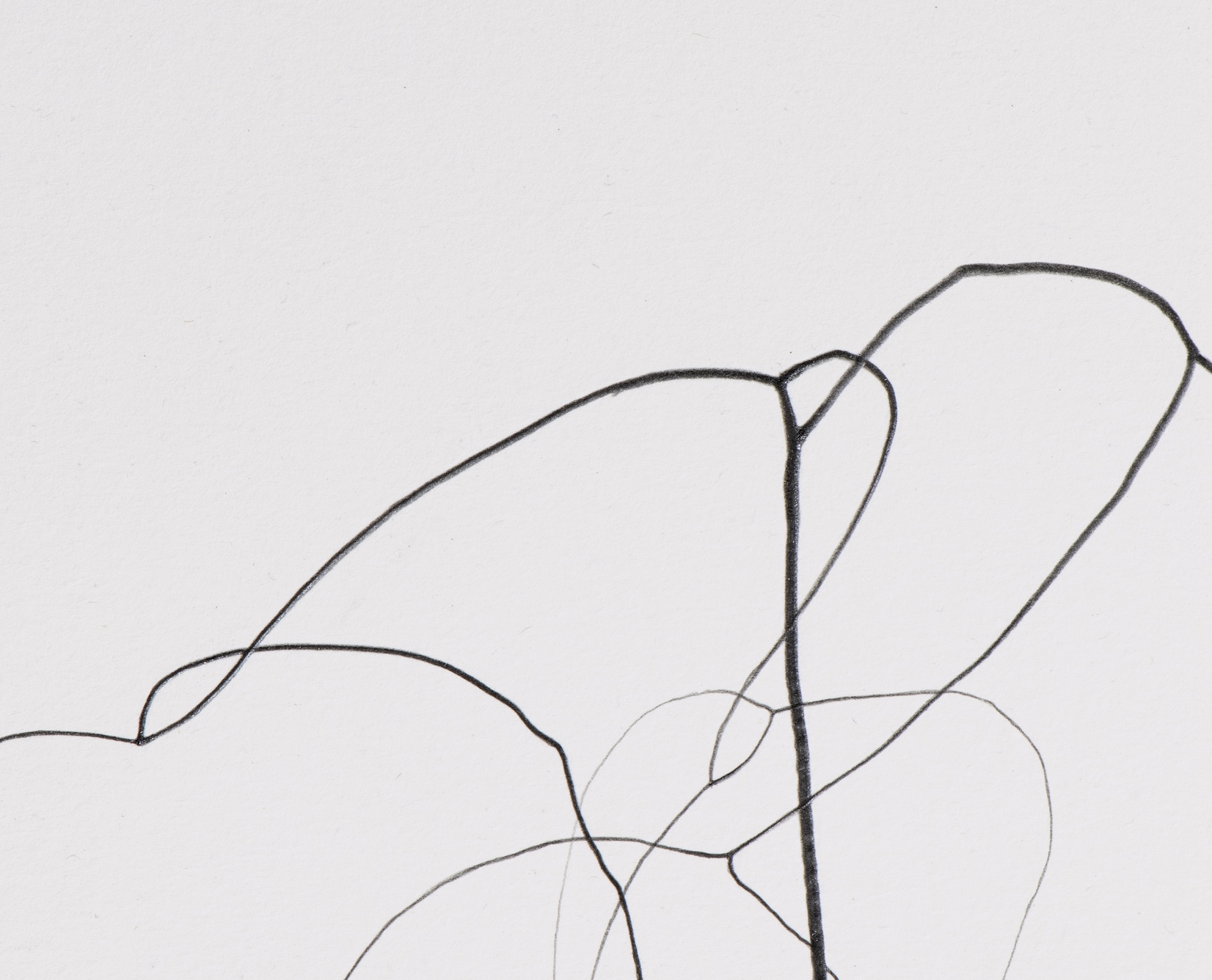Warning: Some ads appear on Art-icle. In order to support the site, please disable your Adblock, uBlock Origin, and/or equivalent while browsing. Thank you for your understanding, and thus, for your support!
Thanks to a visit at Drawing Now art fair, Paris, I made the acquaintance with the work of Christiane Löhr, represented by the gallerist Werner Klein, Cologne, whom I’m met in person and who very kindly introduced me to Löhr’s universe and facilitated the contact with her. I thank him for that, as I thank very much Christiane for her time, while she was by the way very busy in preparing an exhibition in Czech Republic.

Léon Mychkine : So, I just wanted to talk with about your drawings which I find very interesting and beautiful, and your gallery owner from Cologne, Werner, told me that you had a special technique with ones done with the oil stick.
Christiane Löhr: There are three sorts of drawings; the ones made with ink, the graphite drawings and the ones made with oil stick. For these latter, I’m drawing the lines, and afterwards I’m always wrapping the oil paint with my finger into the fiber of the paper. Then you have these blurred lines, which makes you look at a little bit dizzy. I want to bring together the empty space of the paper and the lines. It’s like a sculpture in the making. Concerning the ink drawings — because the ink is very liquid and fast, I’m working with the paper flat on the table, and the movement of the water. It’s a totally different approach, because I have to decide very quickly the setting of the composition with the the brush. So basically it is made with ink and a lot of water. The process of drying plays also an important role and the work is finishing itself without my intervention. At last the graphite drawings with fine pencil lines, fading out to the edges of the paper sheet.

LM: And do you consider yourself as an abstract artist, or it doesn’t matter ?
CL: It doesn’t matter. I come from the sculpture. I’m coming from the form, so I bring the procedure to arrive to a form into the drawing. These are abstract lines going though the space but following the rules of composition. I try to be as minimal as possible. It’s always the aim, and it’s the same with sculpture : having few elements to come to the artwork.
LM: And the fact that you use different media, such as sculpture, oil stick or ink, does it mean you aim at expressing different things, or it depends on your feeling, or something else?
CL: I’m not a conceptualist, so it concerns rather the inner motivation and mood.
LM: And the feeling?
CL: Yes, and the need, for example to make very strong, stable work, or to go in the other direction. It can be something very light, or something heavy. And in sculpture it’s the same. There are open, transparent works, but can be also very dense. I am always moving between the two poles.
LM: And to come back to your oil drawing, does this practice with your fingers comes from your sculptor part?
CL: Not at all, but I think the body is always involved. When I wrap the material into the white paper, I have to organize space; and all what I’m doing is about the appropriation of space. So for example when I draw one line I divide the paper. When I am doing more lines, I’m cutting it into sections. And the empty space has the same importance as the lines. Sometimes I think that, with the lines, I try to organize the empty space. I think it’s philosophical, and it’s like life: you are doing things and you are leaving things. So there are ‘touched’ parts in the paper, and ‘untouched’ parts in it, and it’s an attempt to put it together.

LM: I reckon that it’s always a difficulty, for an artist, to find the right balance between so-called emptiness and the right ‘filling’; what is not and what is. And it’s a very difficult task, and that’s what I find successful in your work, because you manage to establish an equilibrium between emptiness and the traces.
CL: Thank you.
LM: The force which emerges from there “speaks”, in whatever language it is, by the way.
CL: I think that there is one thing you’ve mentioned before which is very interesting; it is how to arrive to a balanced work, and it’s really hard when you proceed with minimal means. I’m kind of afraid of the white paper, and since all these years, I’ve learned, that I have to let the drawing, when I don’t know how to continue. I know something is missing, but I don’t know what, so I have to leave it. It is practicable, because I have to studios, one in Germany and one in Italy. When I come back to an unfinished drawing I can understand immediately the problem. And so sometimes it takes weeks to find the right line, which completes the work.
LM: Because, if I understand correctly, every line has a meaning, for you.
CL: Yes, but not in a banal way. Maybe we can say that each line has a function in the whole drawing. A drawing can have a lot of lines, but they are making one, in the end. It’s a “Wesen”[i.e., German word for “Being”], one being; like if it was getting a personality.
LM: It’s alive.
CL: Yes. But when it’s done, I’m putting myself into a distance.

This interview has been realized via WhatsApp, between Italy and France, and since the communication was sometimes very briefly cut, I thank Christiane for her help in reading the transcription, which allowed to fill the gaps, before its online publication.
Léon Mychkine, independent art-critic and philosopher (PhD 2007)
![]()
Donate to Art-icle via PayPal
Newsletter

